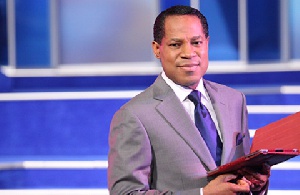The President Nana Akufo-Addo during his famous inauguration speech on the 7th of January 2017, challenged Ghanaians not to be spectators but active citizens during his era of governance.
Active citizenship means Ghanaians must be able to measure the contribution of each of the 110 ministers and their deputies to the priorities and programs of the NPP government.
As active citizens, we need to review the performance of government ministers bereft of propaganda and emotional partisan considerations and rather be driven by data and evidence.
However before we can do that, we need to KNOW the performance agreement signed with each minister/deputy and what are the measures for success so we can hold them to account for their stewardship as servants of the people of Ghana.
The timing of the topic is relevant especially as the Government prepares to submit its programs and budget for 2018 to parliament and this offers the space to situate the discussion so it contributes to the reflections of the President reviewing the performance for the financial year of 2017 and clarifies expectations for 2018.
It could also inform reflections and decision making on potential reshuffles, separations, promotions and new appointments etc. This writer will submit that the application of modern Human Resources (HR) methodologies in performance management could facilitate a “non-propaganda centred” mapping of the line of sight of each ministers’ contribution and performance to the overall government goals, ambition, strategy and programs.
Performance management
The executive wing of government has business goals to achieve and each member of government must be able to show with evidence their contribution towards the achievement of the goals. An individual employee’s performance is a function of effort, ability, collaboration and technology.
Performance management represents one of the key enablers for attaining competitive advantage for every organization irrespective of the sector whether government or non-government, profit or not for profit.
As a concept, performance management helps to define and measure the contribution of an employee to the organization’s business and provides clarity on the “Line of sight” of every member to the overall goals.
As a process it helps to reconcile personal goals with organizational goals to enable achievement of strategic intent, purpose and ambition. As a methodology provides evidence to measure behavior (how) and results(what) & its correlation to positive or negative organizational outcomes and performance.
In Organizational Development – it also serves as a risks management diagnostic tool to trigger change as performance can be thought of as Actual Results vs Desired Results and any discrepancy is defined as the performance improvement zone.
As a cycle, it has 4 key components. The first is the Performance planning where goals and objectives & success indicators & expectations are established and performance of work is monitored.
The second is coaching & feedback to modify variance in performance & reinforce and recognize positive contribution.
The third is performance evaluation or appraisal -where individual performance is formally rated or measured, ratings summarized and documented and feedback delivered and corrective actions applied ie. outstanding performance rewarded and under-performance addressed.
Performance management if done well, ensures all employees receive the tools, skills and authority they need to be successful in their jobs and also helps to differentiate good, average and poor performers.
Types of performance objectives
Process objectives are objectives of a facilitation/collaboration type ie process oriented objectives that enables the delivery of an output or outcome objective.
Typically organizational effectiveness processes ie Communication/PR, Human resources, ICT, Supply Chain, Procurement etc .
Output objectives are objectives that produce a physical result that can be empirically verified e.g. construction of a free SHS school, frequency of meetings, number of reports, client satisfaction survey result, etc.
Outcome objectives are objectives which demonstrate that change or transformation has taken place as a direct consequence of the delivery of a process or output objectives. Eg. as a result of the construction of the free SHS, or teacher training program on how to teach science and mathematics, there is an improvement in teaching and learning outcomes.
Criteria & measures
Every leader and manager needs to have a basis or criteria to measure and evaluate performance. Process criteria help to measure how well things are done in terms of processes, procedures, protocols, methodologies e.g. how long does it take for the Ministry of Health to post doctors after their horsemanship etc.
Outcome/Impact criteria helps to measure the impact of performance on overall organizational and operational performance e.g. what change has occurred as a result of the introduction of the anti-galamsey operations of the Ministry of Lands and natural resources.
Money measures help to assess how performance has led to increased revenues, reduced waste and duplication, and created a more agility and positive results.
Time measures can be expressed as planned performance against actual performance using tools such as project management plan, work timetables, amount of backlog and speed/quality of response etc.
Measures of effect can also help to evaluate observed changes or transformation in behavior, technology, products, customer satisfaction as result of the delivery of the objective.
Reaction measures can be assessed from engagement with stakeholders e.g. via customer satisfaction surveys or 360 degree feedback or upward feedback from subordinates etc. These are tools that the President can apply to review the performance of the 110 ministers and their deputies.
Challenges
Leaders are confronted with many challenges or cognitive biases that can affect the objectivity of the assessment process and outcome and the President as a human being is not an exception and as a rater of his team of ministers, he can have his biases.
Horns Effect occurs where the rater is biased because of a negative first impression /incident of performance and this negatively affects judgment of the overall performance.
The Halo effect is the opposite where the rater remembers a positive first impression / incident of performance and that informs overall judgment.
Recency effect bias occurs where the rater remembers only most recent vivid incident of performance while overlooking the entire performance during the performance cycle.
Personality & values biases occurs where the rater favorably evaluates team members who are like minded in terms of values and personality. Grade inflation & compression occurs where the rater dis either too generous or too mean in his rating.
The central tendency bias occurs where 2/3rds or 66% of the team are average and the 1/3rd or 33% are spread between or outstanding. The confounding variable challenge occurs where it is very difficult for the rater to clearly establish cause and effect of performance due to a confounding factor or contextual factor that is hard to explain.
Conclusion
A new paradigm shift of objectively measuring the performance of Ministers and deputy ministers is required to enable Ghanaian as active citizens hold the executive wing of government accountable for their stewardship.
Five key enablers will be required. Firstly Political will by the President to manage his ministers and deputies based on evidence not on propaganda.
Secondly multilayered engagement across all sectors of the economy in the design, execution, monitoring, evaluation and learning and documentation of the entire performance management value chain.
For example engagement with civil society, academia, business, donor community, general public at national, regional, district and community level will ensure an integrated approach towards managing the performance of ministers and their deputies.
Thirdly there is need for rigor in ensuring the objectives for the Ministers and their deputies have a clear theory of change ie expectations of transformation or impact expected as well as consistent application of measurement tools devoid of partisan considerations.
Fourthly boldness by the President to recognize outstanding performance and also address under performance firmly without fear or favour. Fifthly, the media must play a leading role in focusing discussions on the performance of Ministers on the substance and not the “sensational politics” of the delivery of performance objectives.
As for political parties, I know they will simply do partisan performance reviews, we must not give such people air time to spew hot air – lets help the President to measure what was agreed to be delivered and let’s examine how it was done with evidence not emotions!
Mr President I also urge you to start a culture of publishing the performance evaluation of all the 110 Ministers and deputies for all active citizens of Ghana to review when they are completed.
caselycoleman@yahoo.co.uk
Opinions of Saturday, 11 November 2017
Columnist: Casely Ato Coleman















